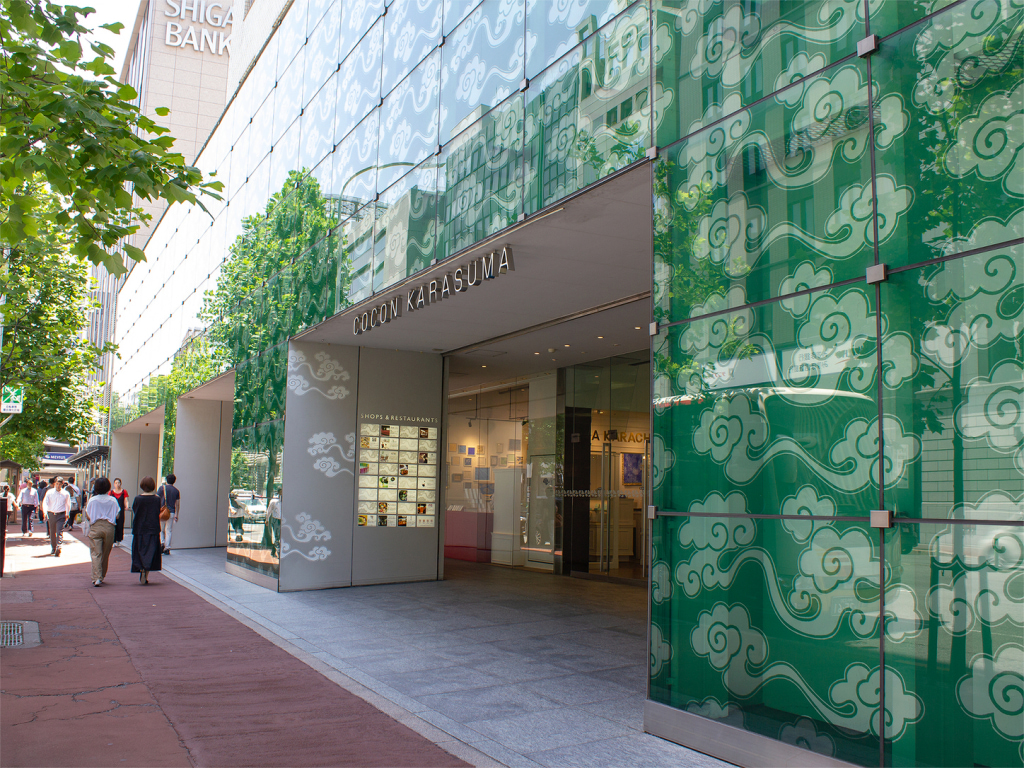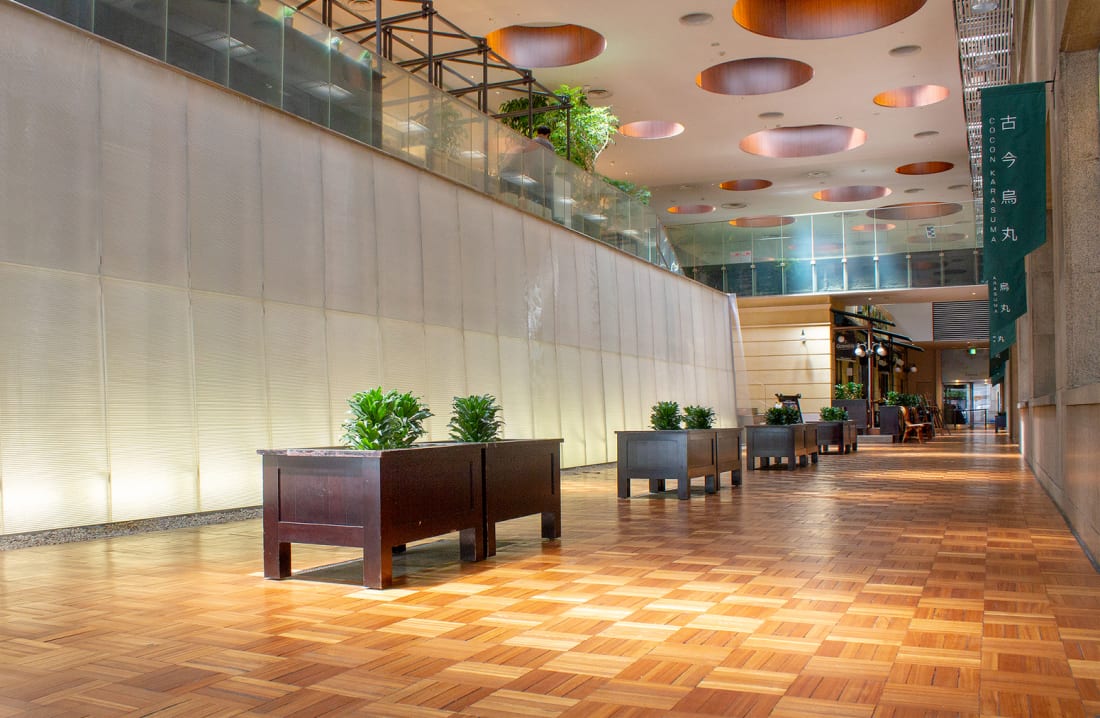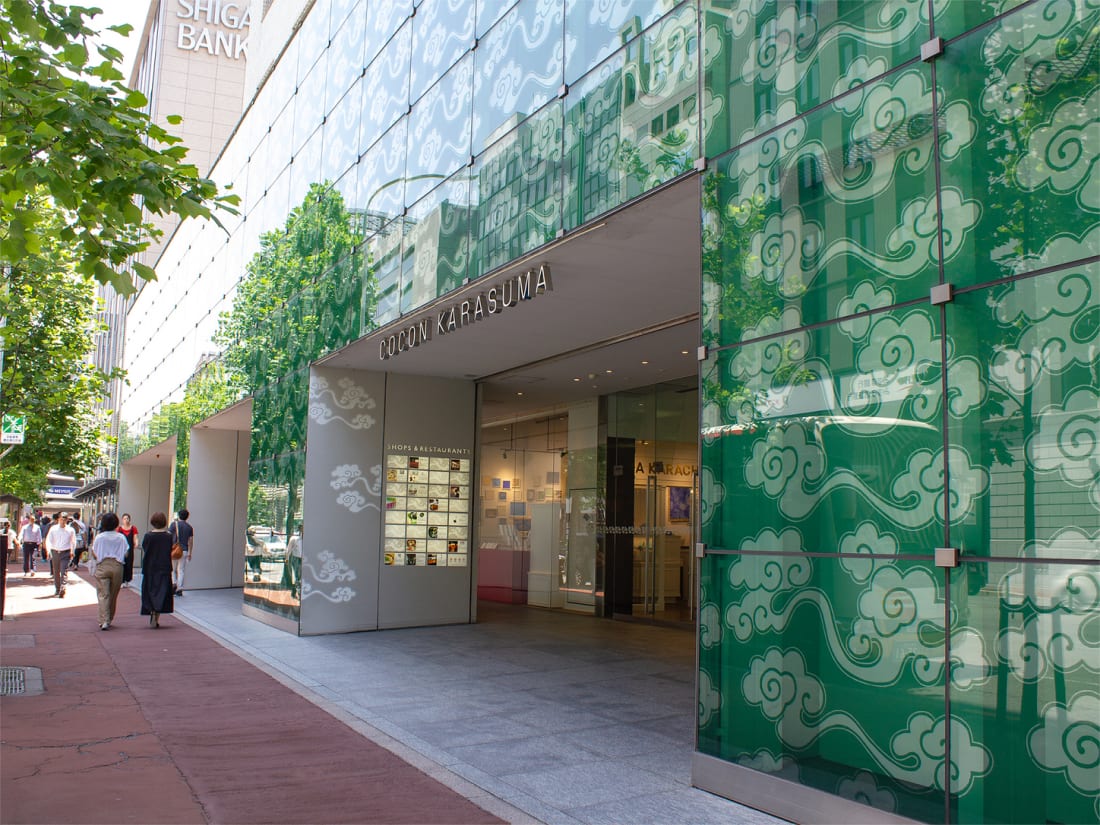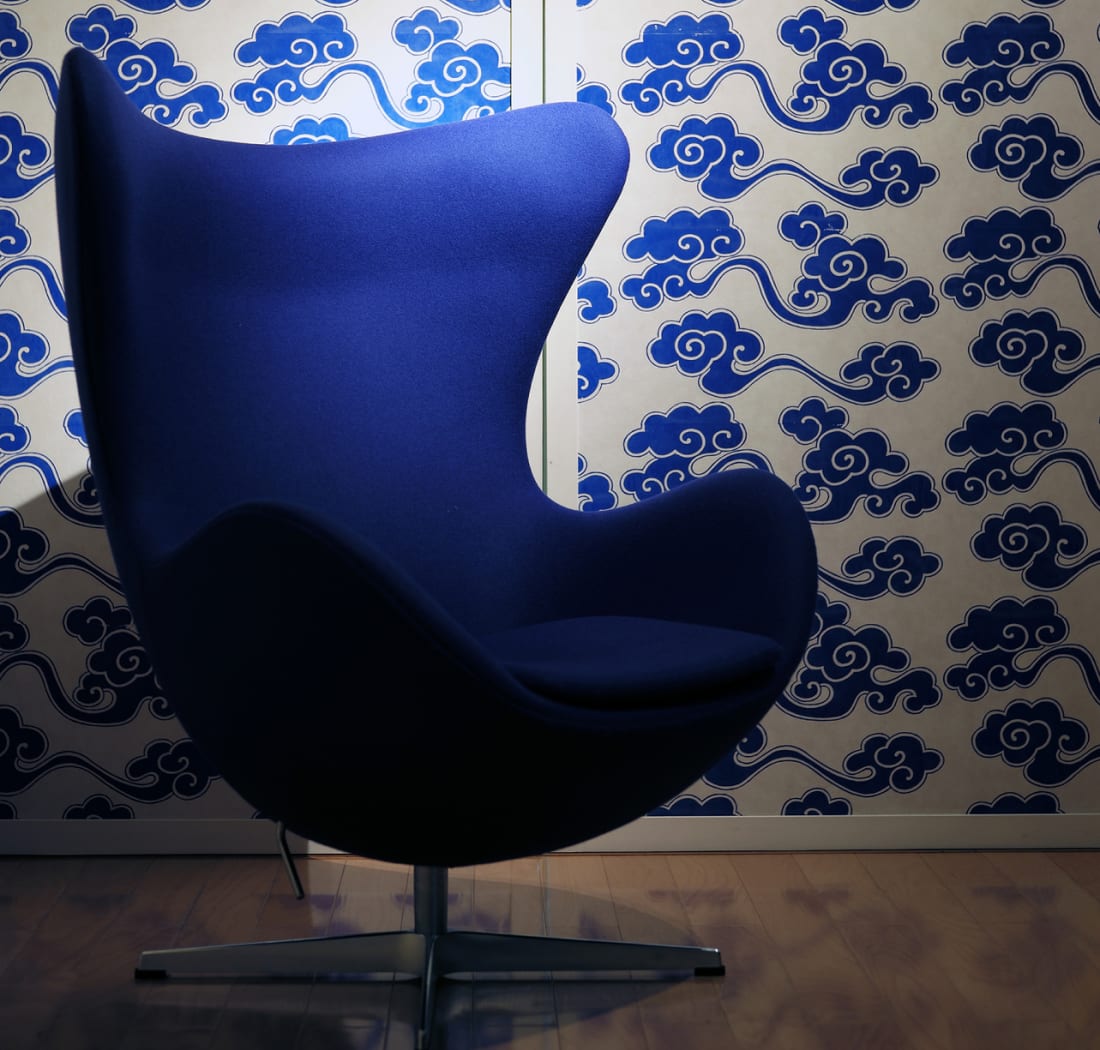For a true taste of Kyoto’s long history and traditional craftsmanship, head to this beautifully renovated complex that preserves the old while welcoming the new.
First opened in 1938 under the name Marubeni, COCON KARASUMA is a shopping, dining, and entertainment center that sits in the middle of Kyoto’s bustling business and banking district, just off the corner of the junction between Karasuma Avenue and Shijo Street. Having survived World War II, it has become one of the area’s most recognizable landmarks.
In 2004, illustrious architect Kengo Kuma was called in to renovate the complex, and he created a bright and inviting space that preserves the image of Kyoto’s ancient history while also bringing it into the “now,” hence the name Cocon. Cocon is written in Japanese as 古今 (the characters literally mean “old/past” and “now”) and the theme is visible throughout the building. To retain as much of the structure’s old charms as possible, both the wooden floors in the main area and the tile floors in the staircases have been preserved.
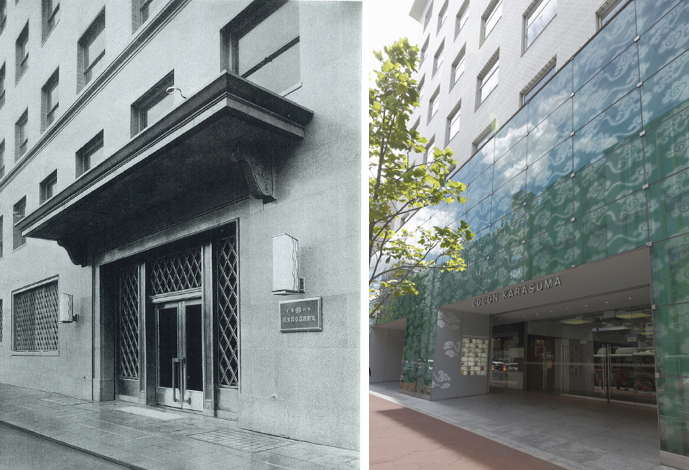
Old exterior (left) versus the new, renovated building
A Distinctive Façade: Old Design in a New Format
Kyoto is known for its strict regulations on building height and styles, enacted in part to preserve the historic image of the city. This was taken into account when COCON KARASUMA was renovated. A panorama of modern glass covers the old building façade and depicts an early Edo period design of long tailed clouds called Tempyo Oguma. It was a favored design of temples in the old capital as the clouds are a sign of the coming of Amida Buddha to welcome the spirits of the dead. The theme was chosen from approximately 650 woodblock designs from Kira Karacho, a karakami (traditional decorative paper) craft shop that has an antennae store inside COCON KARASUMA. The subdued teal background is a sophisticated addition to the street view without being too intrusive, and is especially beautiful when lit up at night.
A Center of Style
COCON KARASUMA now houses shops on four floors, and offices above these. The atrium features a 25-meter-long waterfall and an open area for visitors to rest and enjoy the view. Events are held regularly, including Design Week Kyoto, coffee, sake and tea tasting events, art exhibitions, and more. The building’s select shops are separated into three zones: interior and lifestyle; theater, gallery and school; and café and restaurant. Two stores in particular bring COCON KARASUMA’s concept of “old and now” to life: kara-S, a shop and gallery space, and the above-mentioned Kira Karacho, a karakami craft shop that dates back to the Edo period.
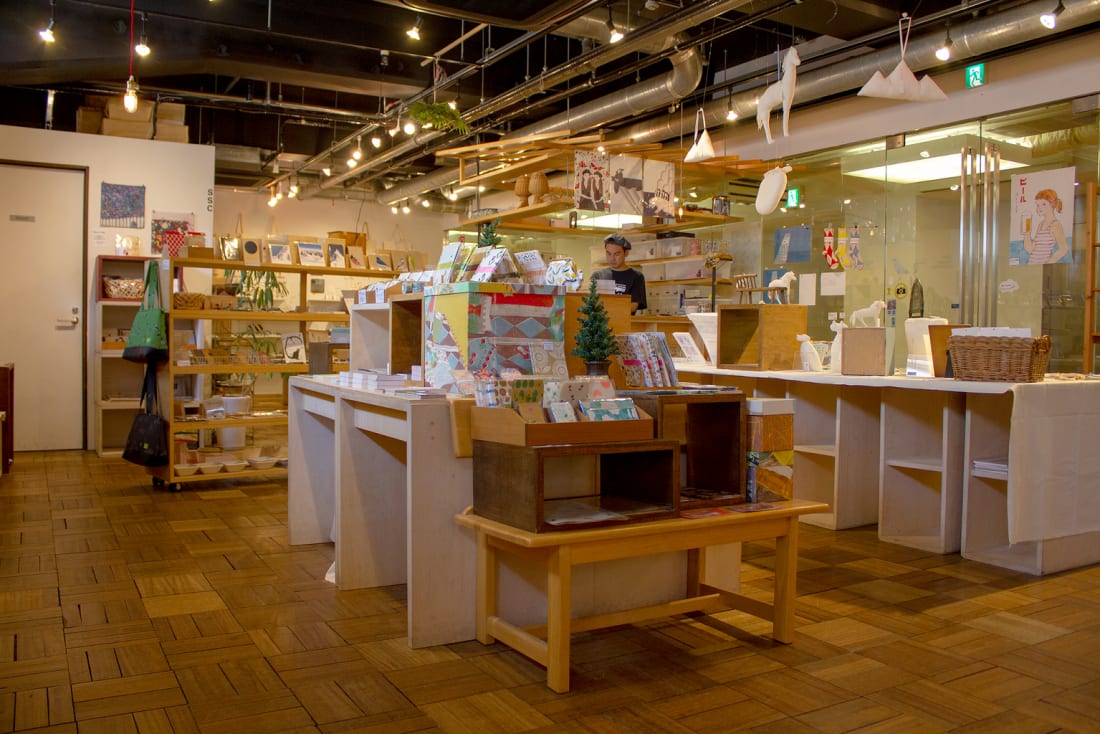
kara-S
Promoting a New Generation of Designers at kara-S
A shop-meets-gallery on the third floor, kara-S is a fascinating satellite space run by production company Zuurich and nearby Kyoto Seika University. Developed under the concept, “a creative space to find happiness and surprise,” kara-S features art, accessories, and even tableware made by Kyoto Seika University students and graduates, as well as some local artists curated by Zuurich. Students and graduates are required to make presentations for shop staff before their work is displayed, and if successful, their work will be accepted on a provisional basis. If their items sell well, they get to stay. The experience gives up-and-coming artists both a place to exhibit their creations and get a taste of the real-life art world.
Visitors will find a cornucopia of items in various styles ranging from earrings and T-shirts to stationery, tableware, and lamps. For the person who has everything, there’s certain to be something new here. You never know, you may find something by the next Yayoi Kusama! kara-S also holds regular events, such as workshops and seminars, and the gallery exhibitions change frequently, so there is always something new to discover.
Traditional Craftsmanship in the Modern Age at Kira Karacho
Kira Karacho is the only karakami manufacturer in Japan that has continuously been in business since it first opened in 1624. The company’s artistry has been a favorite of the aristocracy and temples for centuries, and has graced the interiors of many cultural treasures, including Nijo Castle.
Karakami is a traditional brand of decorated paper that is printed by hand, one sheet at a time. It’s printed on high-quality Japanese washi paper to produce sophisticated designs and rich, uniform patterns that often depict objects and scenes from daily life.
Kira Karacho has continued its craft for generations and boasts about 650 woodblock pieces, many carved by hand from white-bark magnolia. Some are over two centuries old and still in use today.
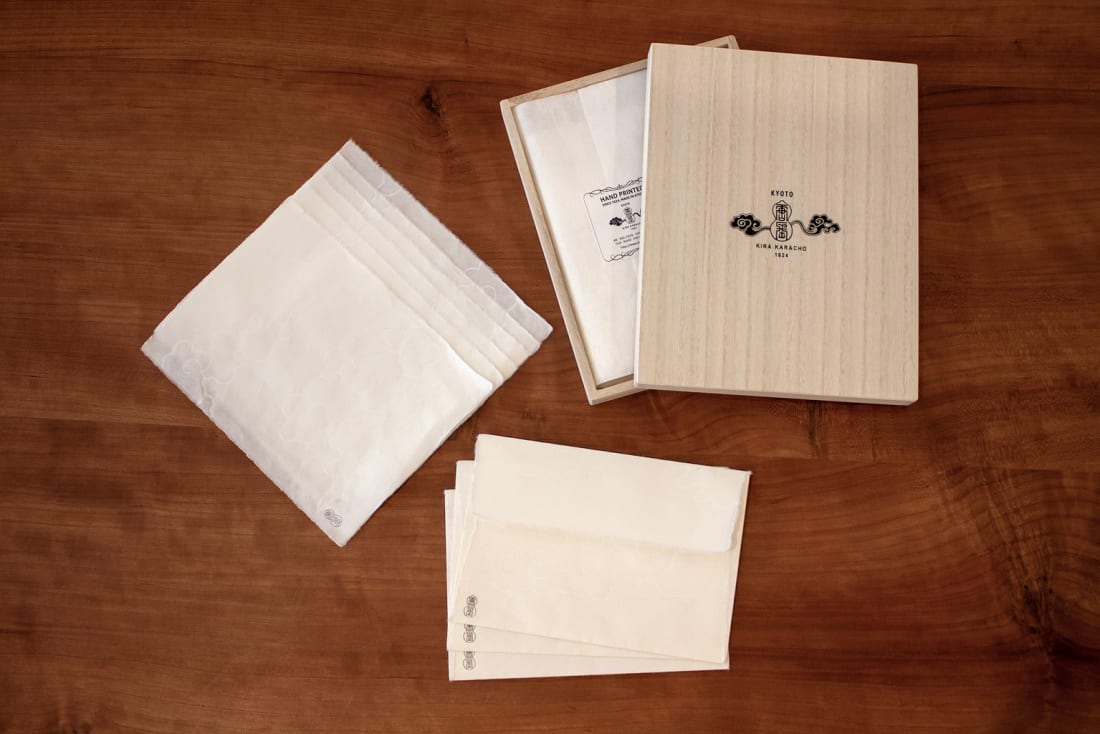
Kira Karacho
The designs – both then and now – follow a theme of hannari, which means gorgeous, elegant, and bright in the Kyoto dialect. Traditionally, the craftsmen at Kira Karacho created designs for fusuma (sliding panel doors) and similar. In a move to accommodate modern tastes and Western-style homes, their work has taken a contemporary twist. You’ll find stationery, postcards, and individual interior pieces to be hung on the wall, as well as business cards. Each card is printed by hand, making for a great icebreaker when meeting new clients. For souvenirs that resonate with the true traditions of Kyoto craftsmanship, Kira Karacho is the place to go.
COCON KARASUMA
620 Suiginya-cho, Shijo-Sagaru Karasuma Avenue, Shimokyo-ku, Kyoto
075-352-3800
www.coconkarasuma.com
Opening hours: 11am-12am (closing time varies according to individual shops and restaurants)
Sponsored Post

